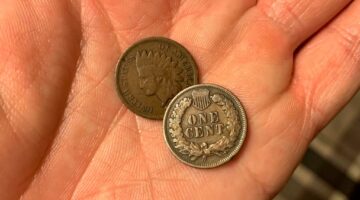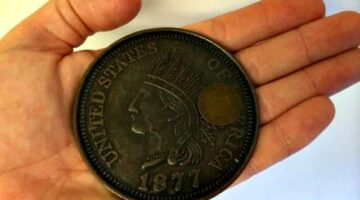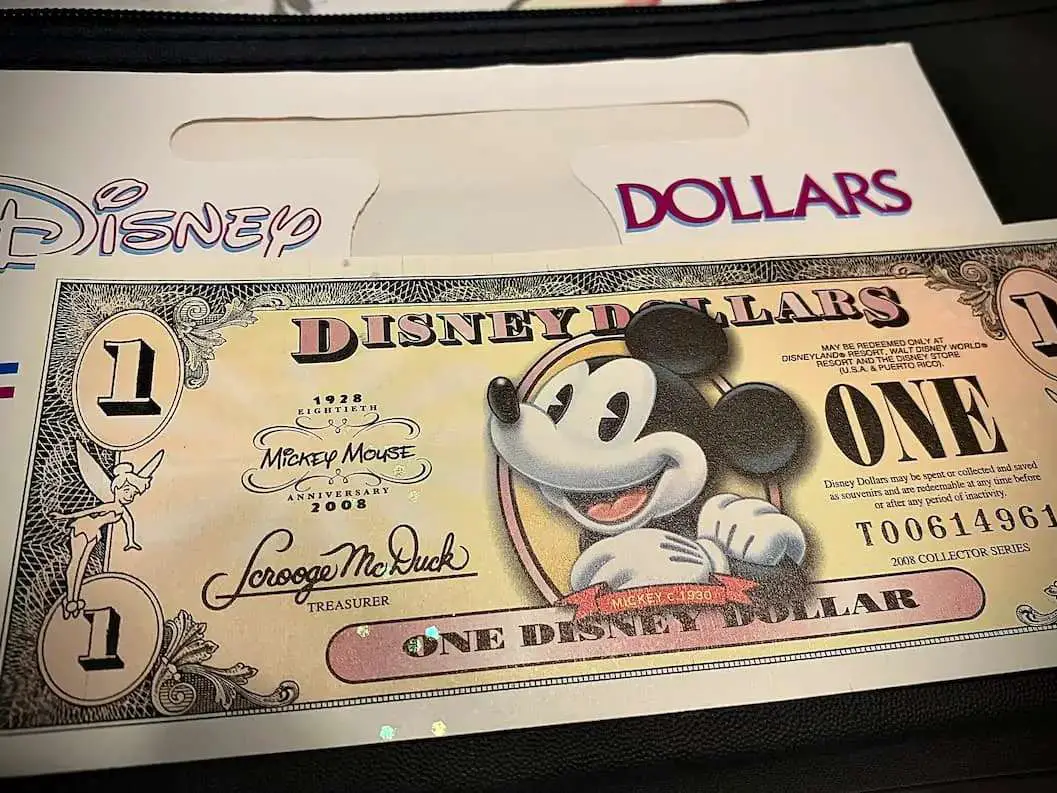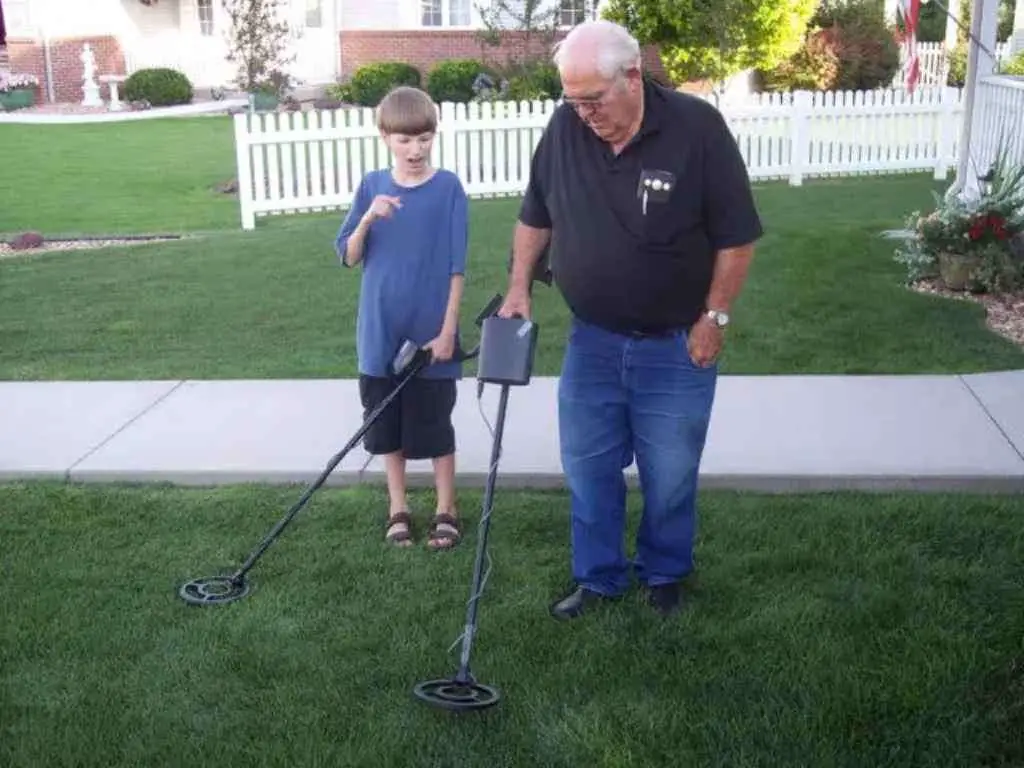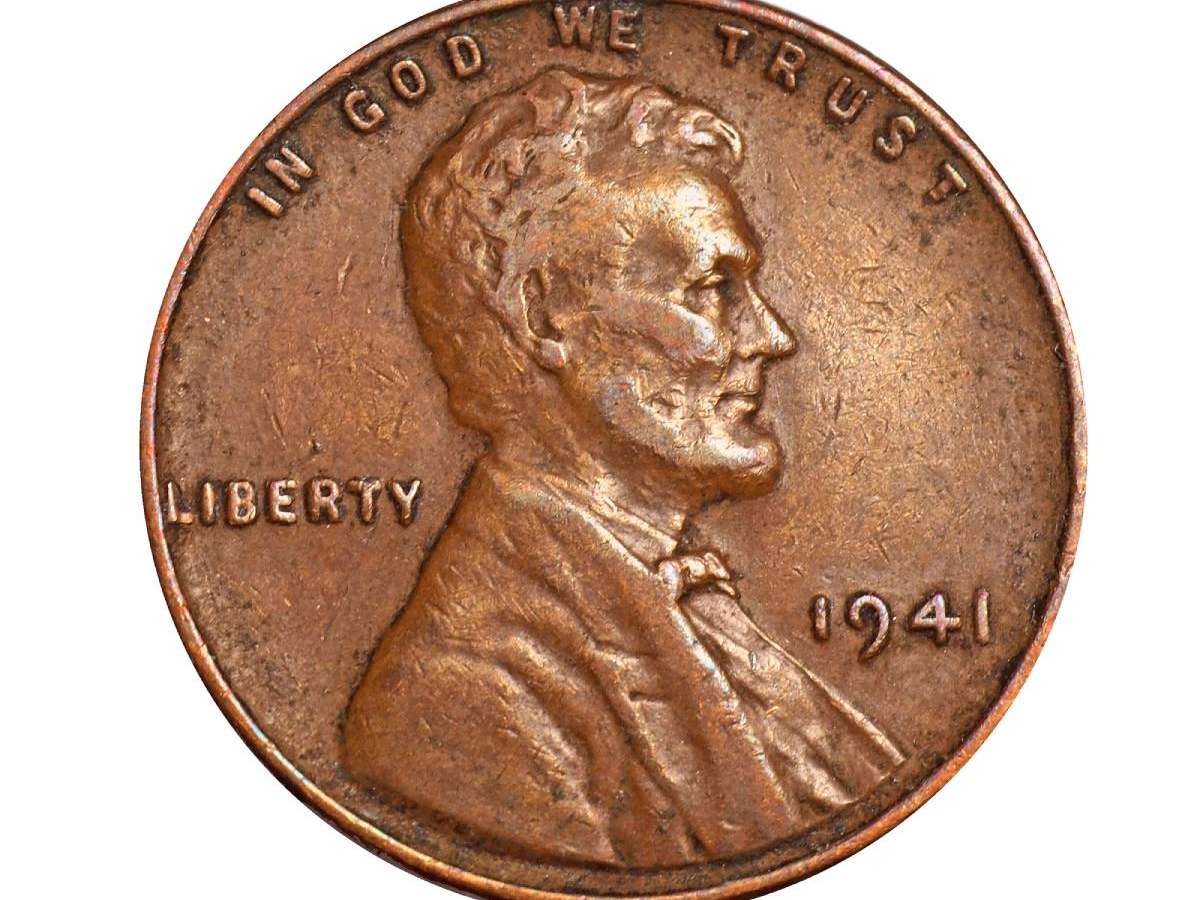The 1877 Indian Head penny is one of the scarcest coins of the 19th century.
It’s also one of the rarest Indian Head pennies and serves as its popular key date.
A lot of coin collectors spend years chasing after this rare penny!
The 1877 penny is so old and valuable that nobody really has a chance of finding one in pocket change anymore. If you want one for your collection, you’ve either got to buy one or be lucky enough to receive one as a gift or heirloom.
You’re about to find out the answers to the most common questions people have about this rare coin, including:
- How much is an 1877 Indian Head penny worth?
- How rare is the 1877 Indian Head penny?
- Why is the 1877 Indian Head penny so valuable?
- How many 1877 pennies were made?
- How big is an 1877 Indian Head penny?
- Are 3-inch 1877 pennies real?
- How to spot a fake 1877 Indian Head penny?
- How much is an 1877 Indian Head penny replica worth?
How Much Is An 1877 Indian Head Penny Worth?
The 1877 Indian penny is the second-lowest mintage business-strike issue, with only 852,500 struck.
Experts believe that only 5,000 or so may still exist, making this a truly scarce coin — scarcer, in fact, than even the 1909-S VDB Lincoln penny (which may number closer to 40,000 or even 50,000 survivors).
Additionally, the Indian Head cent is one of the most popular 19th-century coins collected by date and mintmark. Therefore there’s a lot of demand for this rare penny.
The 1877 Indian Head penny is worth:
- $700 in a grade of Good-4
- $1,650 in Extremely Fine-40
- $3,500 or more in Uncirculated grades
In other words, this rare penny is worth big bucks!
Other 1877 Penny Values
“Other” 1877 pennies? Oh, you mean the ones that look a little different?
There are many types of 1877 replica pennies out there.
Maybe you’ve seen the most common ones:
- 1877 3-INCH Indian Head penny
- 1877 Indian Head REPLICA penny
- TINY 1877 Indian Head penny
Unfortunately, these are all common replicas of the original 1877 Indian Head penny — and they have no numismatic value.
They do, however, make neat mantle pieces or novelty gifts!
Beware Of Fake 1877 Pennies
Would you believe there are more counterfeit 1877 Indian Head pennies out there than real ones?
With only 5,000 or so genuine specimens to go around and tens of thousands of replicas, counterfeits, and other fakes… that’s probably no surprise.
Sometimes the fake ones are obvious:
- Like the very small and very large 1877 Indian Head pennies. The makers of those tiny pennies and 3-inch pennies mean no harm. They’re sold as novelty gifts at souvenir shops and card stores. They look nifty on a knick-knack shelf and make terrific (and FUN!) gifts for coin collectors.
- And the normal-size 1877 pennies with the word “COPY” or “REPLICA” on them. They may look a little more realistic, but they clearly state that they’re not authentic. So no foul there, either.
But, unfortunately, there are many, many pieces that closely resemble 1877 Indian cents that aren’t the Real McCoy and aren’t inscribed as such to tell you otherwise, either. These are the ones you have to watch out for!
It’s infeasible to warn you on all the things to look out for here — because the world of counterfeit coins changes too quickly.
These are some warning signs of the less obvious fake coins:
- Cast counterfeits — These are about the same size as a normal coin, but they may be lighter or heavier and often have a porous appearance. A visible seam may run around the edge of the coin.
- Altered coins — Some folks try to swindle others by altering the date of a real Indian Head cent to make it look like an 1877 penny. You’ve got to know what a real 1877 penny looks like (including tiny details and other nuances), in order to tell a real one from a fake or altered piece.
- Other counterfeits — Criminals have access to very high-tech minting equipment. When in the wrong hands, these advanced mint presses and coining devices can run off realistic-looking copies that are made from striking a fake design on smoothed-down Indian Head cent planchets.
Sadly, there are plenty of unscrupulous people trying to take you for a ride. They’ll hawk you an 1877 penny that may look real, feel real, and maybe even sound real when dropped on a hard surface — but they’re selling you a piece that is anything but authentic.
Must read: Collecting Fake Coins
How To Protect Yourself From Counterfeit Rare Coins
“Buy the book before the coin.” It’s an old adage that means you should study up on the coins you wish to collect before you actually begin collecting them.
Taking this advice can save you a lot of money wasted on buying bogus coins, cleaned coins, damaged coins, and other things you’d rather not spend your hard-earned dough on. It will also make you a highly informed and knowledgeable collector!
Remember, an authentic 1877 Indian Head cent should:
- Weigh 3.11 grams
- Measure 19 millimeters wide
- Not be sold at a huge discount (Remember, “You get what you pay for!”)
- Not look substantially different than any other Indian Head penny — except for the date. (There should be no weird marks around the “1877” date, or a seam, or a raised line around the edge.)
You may also consider buying an authenticated and graded 1877 penny that has been slabbed by a reputable third-party coin-grading service.
Choosing slabbed specimens from a coin dealer is one of the safest ways to buy rare coins like the 1877 penny.
Read next: A List Of The Most Valuable U.S. Pennies
I’m the Coin Editor here at TheFunTimesGuide. My love for coins began when I was 11 years old. I primarily collect and study U.S. coins produced during the 20th century.
I’m a member of the American Numismatic Association (ANA) and the Numismatic Literary Guild (NLG) and have won multiple awards from the NLG for my work as a coin journalist. I’m also the editor at the Florida United Numismatists Club (FUN Topics magazine), and author of Images of America: The United States Mint in Philadelphia (a book that explores the colorful history of the Philadelphia Mint). I’ve contributed hundreds of articles for various coin publications including COINage, The Numismatist, Numismatic News, Coin Dealer Newsletter, Coin Values, and CoinWeek.
I’ve authored nearly 1,000 articles here at The Fun Times Guide to Coins (many of them with over 50K shares), and I welcome your coin questions in the comments below!

